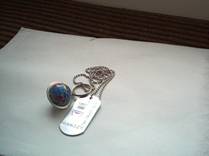I have been living in Thailand since 1989. I have travelled extensively throughout the Kingdom and wanted to share my wonderful experiences of Thailand with others. I talked with many travellers here in Thailand and saw a need to take visitors away from the normal tourist areas filled with large tour buses and groups. The biggest complaint I heard from visitors is “there is no real Thai culture… it’s staged for the tourists”. This is because they keep following each other around using their guidebooks and never see the real Thailand.
In the course of setting up a travel agency here in Thailand, it took about 2 years of research to find the areas that were safe and could handle visitors. I spoke with village headmen, temple Monks, Hill Tribe villagers, National Park officials and local bird experts. I then had to train staff that would take care of our clients with excellent service and provide correct information about Thai and hill tribe culture, Thai food, Buddhism, birds of Thailand, etc.
I lived in a remote area of north Thailand at Wat Thaton temple in the town of Thaton on the Burmese border for more than 3 years. I taught English to Monks, novices, high school students, the Thai Army, local and tourist police. I also did hill tribe programs by taking a small number of tourists to hill tribe villages to spend the evening. All the money for the trek went to the villagers. I bought clothes for the children, medicines and blankets for the families. I paid the villagers to build a bamboo schoolhouse and paid a teacher to teach Thai at the school who could speak their language. I taught them how to dispose of waste properly, keep the children and village clean and to use spoons instead of their fingers when eating which was a big source of their health problems. I provided vegetable seeds and logan and lychee fruit trees for planting.
This was fine until I left the temple then the school stopped and the health problems returned. I talked with the Abbot of the temple and he now has a school for the children at the temple. He has a nurse looking after the children and takes those to the clinics that have problems.
While I was there I help start a guest home where travellers could stay in a Lisu hill tribe village and go trekking in the jungle and visit primitive hill tribe villages in the area. This was not easy, as the villages we visited didn't want visitors as they wanted to maintain their lifestyle and culture. They have seen other villages that accepted tourists turned into a village without harmony and their culture was gone forever. These villagers were farmers and didn't want to look at tourism as a source of income.
I understood the problem as I have seen what a tour operator can do to a village. To most tour operators in Thailand money is first and they don't care about the hill tribe people or their way of life.
I stayed in these villages and met with the village headmen many times. I learned about their culture, way of life, religion, and do's and don'ts. We then came up with a plan that worked out well for the villagers and our clients.
For the Jungle portion of the trek I had to teach the guides to use different trails so it could grow back. They make a hut out of bamboo and banana leaves for sleeping and I taught them not to clear-cut and not to return to an area for at least two months. No more hunting of birds or wild animals.
Without the local culture we would not be able to give our clients the experience they are looking for. We also encourage our clients in helping the local people we visit.
Next month, Randy talks about the difference between tourism and eco-tourism, and provides us with some guidelines about the kind of questions we should be asking ourselves when visiting Thailand or going on any kind of eco-trip.
Randy who was born in Cleveland, Ohio in 1948 has lived in Texas for more than 20 years and in Thailand since 1989 can be contacted by e-mail on: allthai@all-thailand-exp.com. For more information on trips to Thailand, see: http://www.all-thailand-exp.com

 In some cache’s you may be lucky and come across a
“Travel bug”, these are small metal dog tag beetles with a number
on. If you decide to remove this from the cache you must put it in
the book. Once you get home look up the Travel bug online and see
what its mission is, some want to reach a particular destination,
others just want to visit as many places as possible. Your mission
once you have discovered what the bug wants to do is to help it on
its way by planting it in another cache, which hopefully helps it
get nearer to its goal.
In some cache’s you may be lucky and come across a
“Travel bug”, these are small metal dog tag beetles with a number
on. If you decide to remove this from the cache you must put it in
the book. Once you get home look up the Travel bug online and see
what its mission is, some want to reach a particular destination,
others just want to visit as many places as possible. Your mission
once you have discovered what the bug wants to do is to help it on
its way by planting it in another cache, which hopefully helps it
get nearer to its goal.